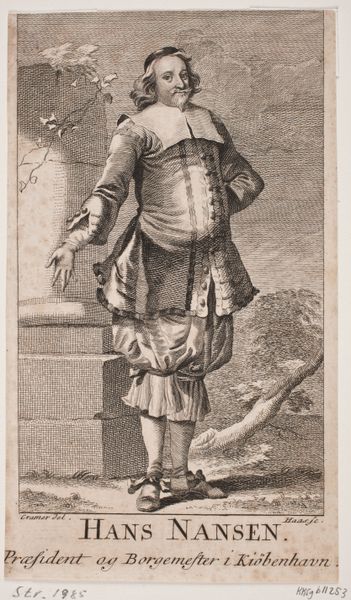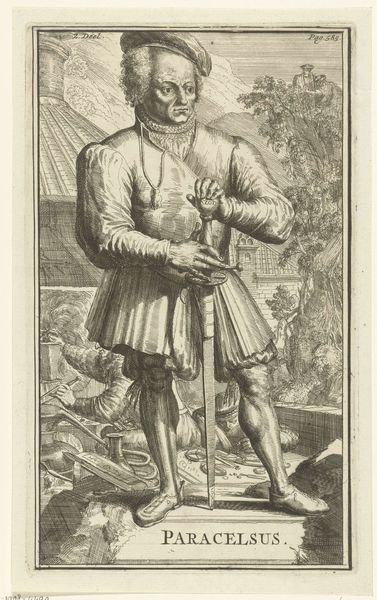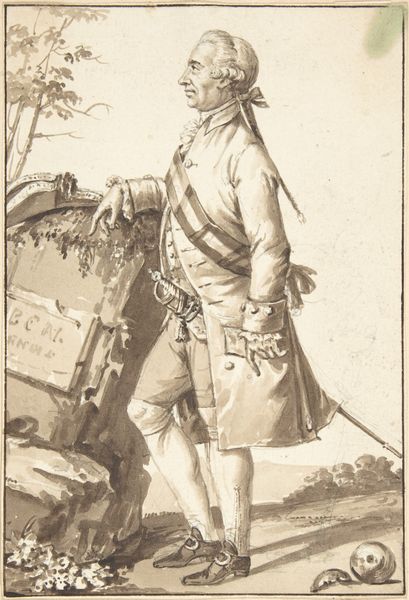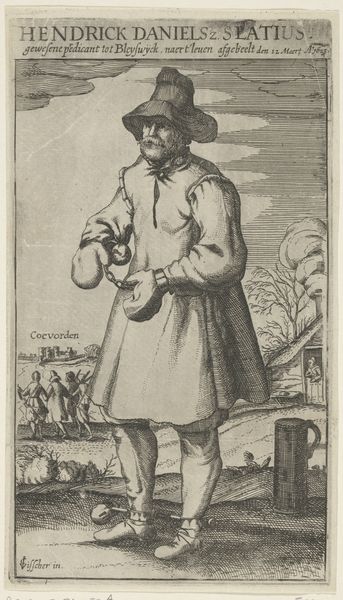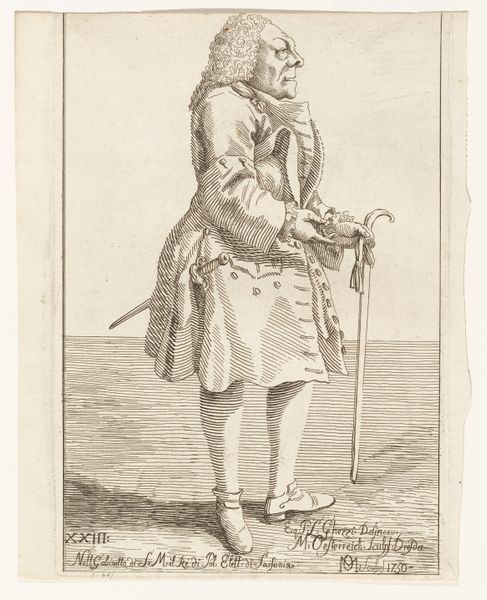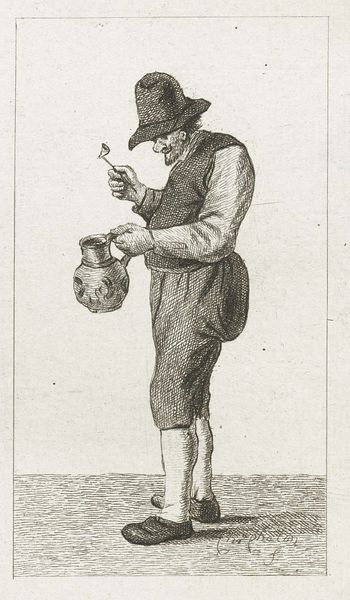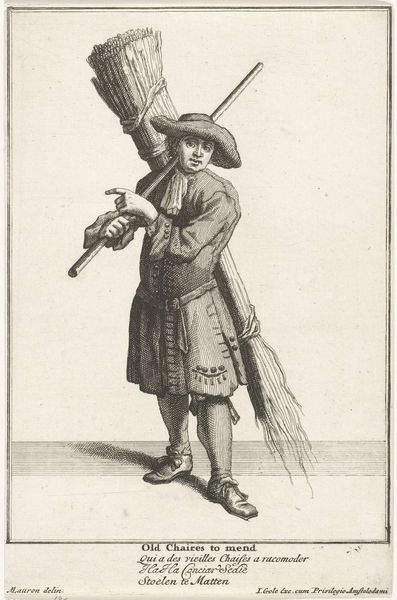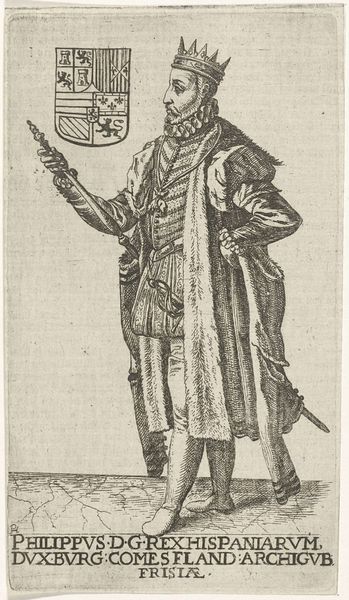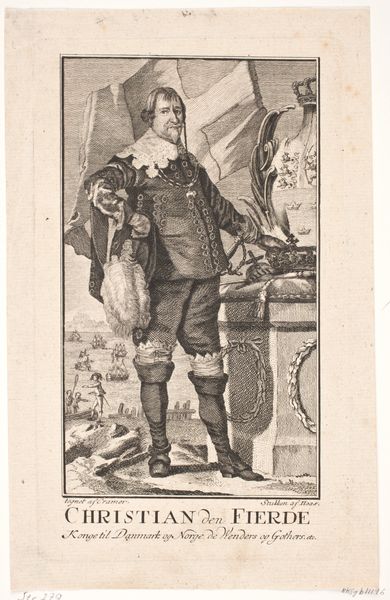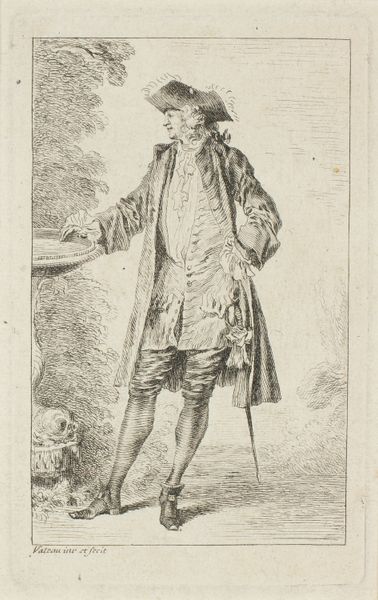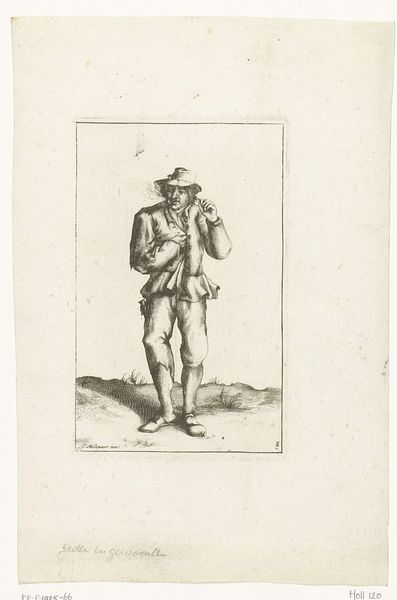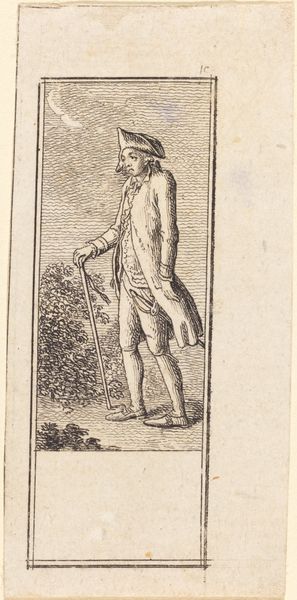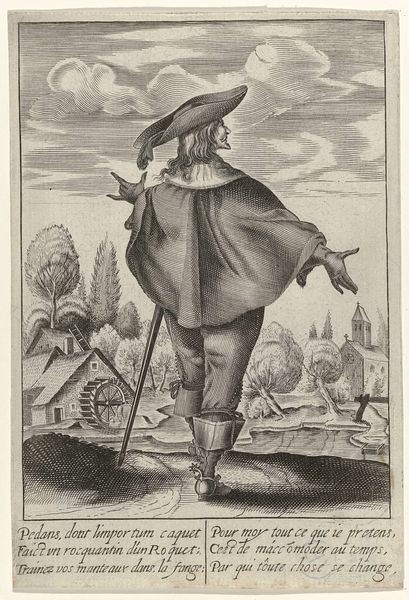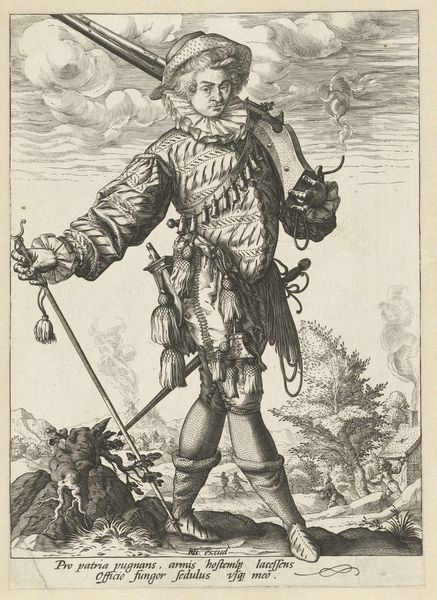
#
cartoon based
#
pencil sketch
#
old engraving style
#
caricature
#
cartoon sketch
#
personal sketchbook
#
manga style
#
portrait drawing
#
cartoon style
#
cartoon carciture
Dimensions: height 268 mm, width 160 mm
Copyright: Rijks Museum: Open Domain
Curator: This etching by Pieter van den Berge, likely created after 1694, is titled "A Sailor Returned from the Indies." What strikes you most about it? Editor: Opulence, definitely. It's dripping with a newfound, almost arrogant wealth. Look at the way he casually holds the rope, the bird, the pipe! He's brought back exotic treasures, without a doubt, but at what cost? Curator: It’s interesting you mention “cost.” Berge offers a fascinating caricature of this sailor, fresh from the East Indies. There's a real satirical edge. I imagine this engraving functioned something like a political cartoon. Editor: Precisely. Beyond satire, consider the labour represented, from the sailor's voyage itself, to the craftmanship that produced everything we see here. The paper itself, the ink, the skill of the engraver to render it, these tell a story of material exchange. That parrot and the tobacco surely came at the expense of others, even if subtly rendered. Curator: Absolutely. I see a reflection of the Dutch Golden Age's duality. Incredible prosperity, technological advancements in shipbuilding and cartography, but underpinned by exploitation. Even the ships in the background become a commentary. Editor: The materiality speaks volumes: copperplate etching enabling replication and dissemination, hinting at early mass culture and the formation of public opinion surrounding the colonial project. Think about who got to look at it! Curator: He certainly seems pleased with himself. He's got his parrot, his pipe... But there’s also a sense of unease. He stands as a figure embodying the human cost often veiled by trade and national pride. It begs the viewer to consider the fuller, ethically complex image. Editor: Yes! Even this small artwork throws a hefty grappling hook at issues surrounding globalism and the commodification of resources, then and now. I wonder, did viewers back then understand this implicit critique? Curator: A wonderful point, to ponder its place within the historical context, it reminds me the narratives art can ignite, long after their creation. Thanks! Editor: And for me, I keep returning to how its making relates to that narrative, and how the consumption of those kinds of materials defined history itself. Food for thought.
Comments
No comments
Be the first to comment and join the conversation on the ultimate creative platform.
